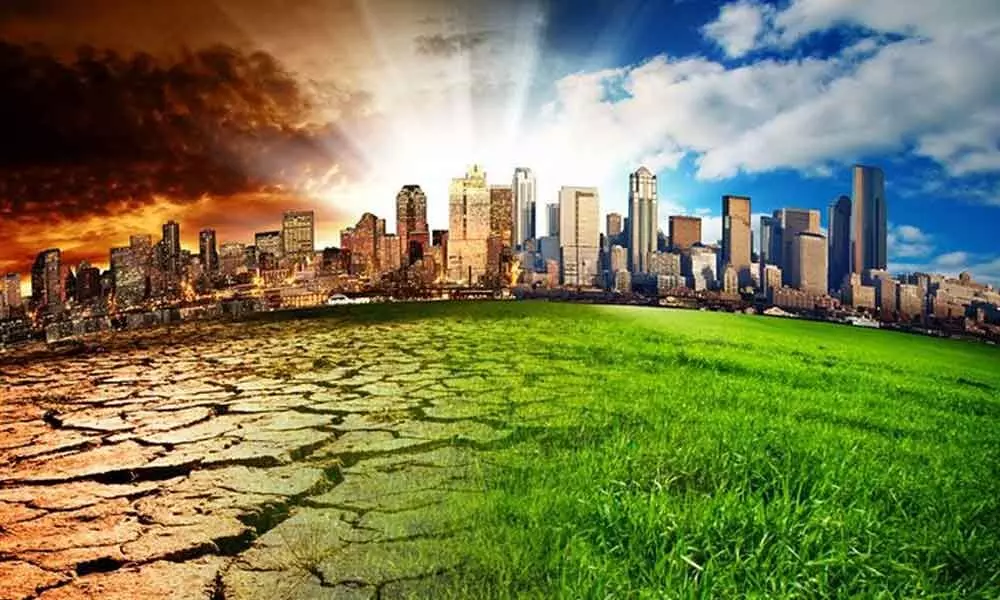Enhancing resilience of cities to deal with climate change impact on water

Enhancing resilience of cities to deal with climate change impact on water
The impacts of climate change are felt in every corner of the world and cities are battered with extreme heat and heavy rainfall.
The impacts of climate change are felt in every corner of the world and cities are battered with extreme heat and heavy rainfall. Increasingly, climate change impact is felt through water. In fact, 75 per cent of natural disasters between 2001 and 2018 were water-related, including droughts and floods.
This year we are witnessing unprecedented floods wreak havoc from Europe to China bearing testimony that climate change is happening now. The frequency and intensity of such events are only expected to increase. India too is not spared from the vagaries of extreme weather which coupled with unplanned urbanisation is resulting in flooding, droughts and other water-related stresses and shocks placing the populations, businesses and the economy at huge risk.
In response to these risks, cities all over the world are preparing resilience and contingency plans for addressing the current and emerging climate change risks related to excess rainfall leading to flooding and prolonged droughts that lead to acute shortage of water supply. It is time Indian cities especially metropolitan cities wake up to the realities and take concrete measures to mitigate the impacts of climate.
What measures cities should take to mitigate climate risk?
Every city faces different water risks. Take Hyderabad for example. It faces two major risks: an increased frequency of flooding events during certain periods and a shortage of drinkable water due to heatwaves. The main source of water for the city are rivers Krishna and Godavari which are more than 150km away.
The energy costs involved in pumping the water from the source to Hyderabad are huge and more than 20 per cent of the water is lost during distribution due to leakages in the pipelines. The question that the city needs to ask is if this is the most efficient way to reach water to its residents. The bigger and even more important question is the impact of climate change on these rivers.
What are the chances that these rivers receive less water, run dry or change course? While the question remains unanswered, it is a possibility that leaves the city extremely vulnerable. It is therefore imperative to take some concrete and practical actions to improve water resilience:
1) Promoting integrated water management - Excessive reliance on sources far off from the city is risky and expensive. Hyderabad needs to undertake integrated water management and promote conjunctive use of surface water, groundwater and lake water. This requires the promotion of groundwater recharging and storage and protecting local water bodies such as lakes through innovative methods and catchment protection to build local resources and create buffer stock.
2) Separating potable and non-potable use of water - Potable water requirement in any city is far smaller vis a vis water required for non-potable uses. The immediate strategy for any city should be to separate the supply of potable and non-potable water, thereby reducing the pressure on fresh potable water demand. This can be achieved by promoting dual water supply systems in new urban layouts and buildings. This can also be achieved by promoting recycling and reuse of wastewater (post-tertiary treatment) for non-potable applications in parks, industries, urban greening. Equally important is to ensure mandatory rain-water storage in schools, buildings, stadiums, exhibition centres, airports, and high-rise buildings for non-potable applications.
3) Sponge city and groundwater as a strategic source - Groundwater recharge should be aggressively promoted by creating sponge sites so that the urban spaces are absorbent and collect the excess water in aquifers and temporary underground storage spaces for later re-use. This requires a change in urban design principles and codes of practice. These approaches would not only diversify water storage across the city to create water source security but also reduce flooding.
4) Promoting water efficiency – Introducing water conservation building code (on the lines of energy conservation code), promotion of water-saving appliance standards in commercial buildings, promotion and incentivisation of water efficiency in industries and minimizing leakages in city water distribution system are some of the measures which would cut down the usage of freshwater by over 25 per cent.
5) Stormwater management - The floods of 2020 in Hyderabad underscores the importance of flood protection & management. It is critical that the city development plans, master plans, water and wastewater master plans integrate the climate change agenda. Urban planning needs to be informed by flood modelling, water audits, and studies on heat effects. Equally important is to include the promotion of open spaces to provide for water storage, water plazas and green zones through urban design.
6) Water governance and institutional capacities - Effective implementation of the above measures require a body to convene and monitor performance cutting across multiple departments in the city. A high-level steering committee should be constituted at the state level comprising heads of various departments, experts from civil society and NGOs etc. A climate change management unit should be established to support the steering committee and build capacities of various departments and stakeholders.
7) Citizen engagement - Water resilience in cities cannot be achieved without the active engagement of civil society, media and the private sector. Climate change action groups need to be constituted for continual engagement of stakeholders in planning and implementation of water conservation and climate-friendly measures.
Improved understanding of water-related risks needs to be followed up with the implementation of prioritised actions and investments to make the city water resilient. This calls for political will and administrative acumen.
(The authors are Director, Centre for Environment & Urban Governance, Administrative Staff College of India (ASCI) and Professor, Centre for Environment & Urban Governance, ASCI respectively)


















